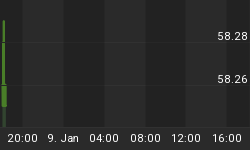The good news is:
• Every indicator turned sharply upward last week.
We use breadth indicators to reveal subtleties invisible in the price charts. After last week there are no subtleties. The question to be answered is: Did the sharp rise in everything last week indicate that a bottom is in or was it just a seasonal rally off an oversold low?
NASDAQ new lows declined from a high of 200 on Friday April 29 to a high of 114 on Monday of last week and a low of 67 on Thursday. It is encouraging to note that the lowest number of new lows occurred on the only down day of the week for the NASDAQ composite (OTC). Any number of new lows over 70 on the NASDAQ should be considered worrisome and the low of 67 last Thursday was the only day with less than 70.
On the NYSE 40 new lows is the worry number. The high for NYSE new lows was 49 on Monday down from the high of 138 on Thursday of the previous week. The low for the week was 19 on Thursday, a down day for most of the blue chip indices.
I have been showing the chart below for the past several weeks. It shows the NASDAQ composite (OTC) in red and a 10% trend (19 day EMA) of NASDAQ new lows in blue. The new low indicator (NL) has been plotted on an inverted Y axis so when new lows are decreasing the indicator moves upward and when new lows are increasing the indicator moves downward. The chart begins November 4, 2004 and dashed vertical lines indicate the 1st trading day of each month. When a bottom has been reached new lows diminish rapidly causing the indicator to move sharply upward. Very short term the indicator can give false signals so it is prudent to wait for 5 consecutive trading days of upward movement before assuming a bottom is in. For the past week the indicator moved sharply upward. NL calculated from NYSE data also moved sharply upward last week.

Summation indices (SI) are running totals of oscillator values. When the oscillator is positive the SI rises when the oscillator is negative, the SI falls. The chart below shows NASDAQ SI's calculated from advancing issues - declining issues, new highs - new lows and upside volume - downside volume. When all of the SI's are headed in the same direction it is imprudent to bet against them. As of last week, they are all headed sharply upward.

The chart below shows the average price change for the NASDAQ composite during the month of May. The month has been idealized at 21 trading days broken down into the 1st 10 and the last 11. The solid vertical black line represents the 10th trading day of the month which will be next Friday. I have drawn an arrow pointing to last Friday. The yellow line is a composite of all years since 1963. The white line is a composite of only the 1st year of the presidential cycle since 1963. On average the 2nd 5 trading days of May have had a slightly negative bias.

This year when prices have varied from their typical seasonal patterns, the variations have been negative. If the indicators hold up next week with its historical slightly negative bias then it is likely that we have seen an intermediate term low. My guess is that we have seen the low.
I expect the major indices to be lower on Friday May 13 than they were on Friday May 6.
















